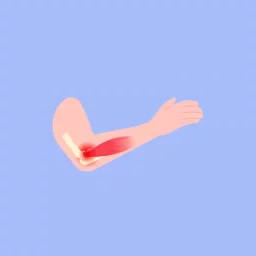You probably thought you were finished with trimesters once your child was born. Within the pregnancy world, healthcare providers are now looking at the “fourth” trimester; the first three months postpartum.
During the postpartum period, there are a huge amount of changes which occur for mom, partner and baby. Your baby is getting accustomed to the outside world and all the stimulation of light, sound and touch that come with it. Parents are getting used to irregular sleep schedules, caring for a newborn and so much more. This period of adjustment can be a challenge for the whole family. Here are five tips for adjusting to life as parents with a newborn:
1. Hold Off On Visitors
While family and friends will be excited to see your new baby, don’t be afraid to ask people to stay away until you feel ready to entertain guests. Some parents may want space for a few days to get settled into being home with a newborn. If you are comfortable having people over right away, then go for it! If you’re not, then that is completely okay and your friends and family will understand.
2. Ask For Help
If getting out of the house is a little overwhelming, especially in the early weeks, ask for help. Friends and family may be able to help get older children to their activities, pick up a few groceries, or run an errand here and there. This can alleviate some of the stress in the early days of having a newborn at home. Looking into doula care may also be something to consider. There are many doulas in Ottawa. Some focus on care during pregnancy while others are available for postpartum care.
3. Meal Preparation
Leading up to your “due date”, it can be helpful to prepare a few healthy meal options that you can keep in the freezer. This can help you and your family have a few easy-to-reheat and healthy meals ready for your first week at home.
4. Babywearing
Babywearing can be a great way to carry your child. Some studies suggest that babywearing may help lead to happier and healthier babies. Be mindful of choosing a carrier that is comfortable for both you and your baby. Keep in mind the following:
- The baby’s knees should be higher than his bottom with legs in a squat or frog-leg position.
- Ensure that the baby’s airway remains unobstructed by having the baby in a vertical position rather than horizontal when in a carrier or sling.
- If using a carrier, choose one with straps that are wide and padded to help distribute the baby’s weight. For more tips on ideal positioning, onya baby has some great tips!
- If you are noticing areas of stiffness and soreness in your back, neck or shoulders, the carrier may not be fitting properly or you may be wearing it for too long. Talk to your chiropractor and registered massage therapist if discomfort persists.
5. Getting Back To Exercise
The old-school advice was 6 weeks postpartum and you were good to get back into your exercise routine. When you sit back and think about how it took your body 9 months to grow a baby and all the physical changes that occurred, getting back to a workout routine 6 weeks after delivery is not necessarily a realistic goal! You will notice your endurance will be lower, your core strength will generally be weaker and you may be more prone to injury with all the changes your body has gone through. An important fact to remember is that hormones such as relaxin are released into your growing body during pregnancy to loosen ligaments. These hormones can stay in your body for several months after pregnancy. Another potential issue is diastasis recti; the separation of the abdominal muscles. This can be a contributing factor the lower back, hip or pelvic pain.
Beginning with everyday activities is a good place to start to help rebuild your core strength such as walking or picking up your child. Once you feel stronger, you can gradually increase your activity level. But not all at once! Think of your workouts as if you are brand new to them. Do not expect to run 10km on your first day back to running. Start with a walk-run routine, gradually increasing your time running. If you have questions on specific exercises to include, or avoid, talk to your chiropractor.
Remember, there’s no guidebook to parenting. You will find your way through all the mixed advice from well-meaning loved ones, the sleepless nights and the piled-high diapers. If you are finding that your anxiety level is high, and you’re not feeling yourself, reach out to your family physician. You may be experiencing postpartum depression. It is estimated that 1 in 7 women may experience postpartum.
It is never too late to reach out to a trusted friend or healthcare professional. For more information or to book an appointment with one of our chiropractors, physiotherapists or massage therapists, visit our clinic websites at Curavita Byward and Curavita Glebe.
Byward Market
Email: info.byward@curavita.com
URL: https://byward.curavita.com
Glebe
Email: info.glebe@curavita.com
URL: https://glebe.curavita.com

















[…] is another way to carry your baby while promoting spinal health and development! Check out our fourth-trimester blog post for more resources on […]
[…] day it is. For most parents, this is a daily scenario all too common during the first few months of bringing a baby home. Parenthood is a 24-7 job with never-ending physical demands that include laundry, baby carrying, […]